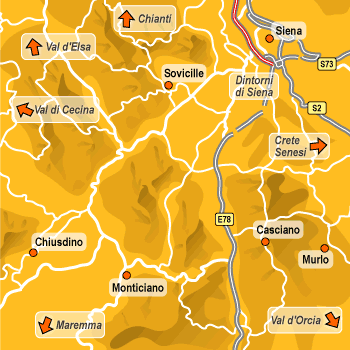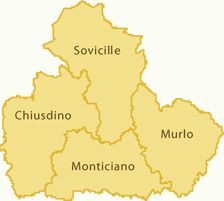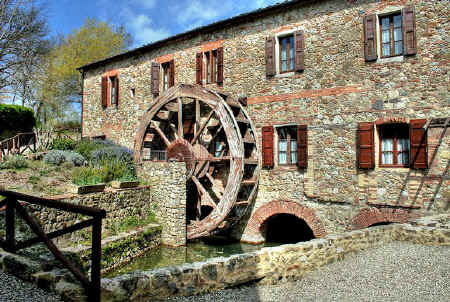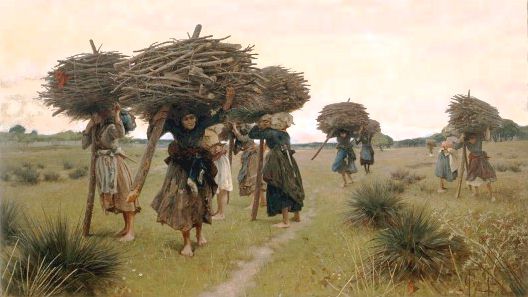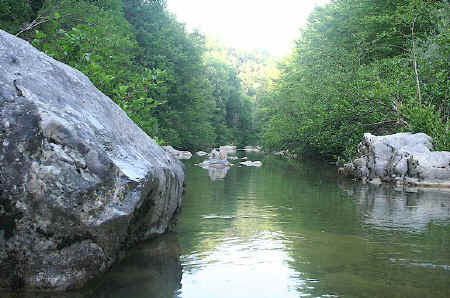
The River Merse |
||||
|
The Val di Merse is a verdant area of the Province of Sienna that lies between the rivers Farma and Merse, on the border of the Alta Maremma in Tuscany, Italy. The area is heavily forested with abundant wild-life, its own hot springs at Petriolo and beautiful villages such as Monticiano, Chiusdino, Murlo and Sovicille. The Farma is famous for its waterfalls, the Canaloni, which can be reached via sign-posed paths through the forest. The Val di Merse offers tranquil and inexpensive vacation rentals and yet is within easy reach of numerous tourist sights. These include Sienna itself as well as San Galgano, the Maremma and the Etruscan ruins of Vetulonia. The river Farma marks the natural boundary between the provinces of Sienna and Grosseto, but it is above all a demarcation line between two economies that are historically very different: mercantile civilisation on the one hand and a woodland/mining economy on the other. The Farma and the Merse converge and shortly afterwards join the Ombrone which flows into the Tyrrhenian Sea on the coast of Tuscany near Grosseto. |
||||
|
||||
|
Throughout the Val di Merse forests, there are traces of pre-industrial manufacture, including the remains of mediaeval mills. In the Chiusdino area, after the year 1000, castles were built, like the one in Miranduolo, where local mineral deposits
were worked, and rich monasteries like those of San Galgano or at Santa Maria di Serena built dozens of corn grinding mills and fulling mills for working wool. In the
13 C, the Abbey of Santa Trinità e di Santa Mustiola di Torri and the Municipality of Sienna worked together to build a series of large mills along the river Merse between the villages Brenna and Orgia, to supply
Sienna with flour. There is a well-restored mill at Torniella.
Near Murlo, metal has been worked since the Etruscan age, and near Monticiano, along the river Farma, on territory governed by the municipality of
Roccastrada, several ironworks built from the late 13 C onwards are still visible.
The dense woods of the Val di Merse were the home to a variety of foresters. Woodsmen known as "palaioli" trimmed trees to produce the stakes (pali)so important in an agricultural age. "Vetturini" transported the timber on mules. "Boscaiole" transported firewood on their backs. But for centuries, right up until the end of the 19 C, charcoal was an important fuel in a peninsula lacking coal, making the "carbonari" (charcoal burners) among the most important of the forester fraternity. The carbonari spend long periods in the forest cutting wood and turning it into charcoal. The wood was stacked vertically around a central pole and was then covered with clods of earth and dry foliage. The slow burning process lasted four or five days and then the vetturini arrived together with the "imballini" who weighed the charcoal into sacks. |
||||
